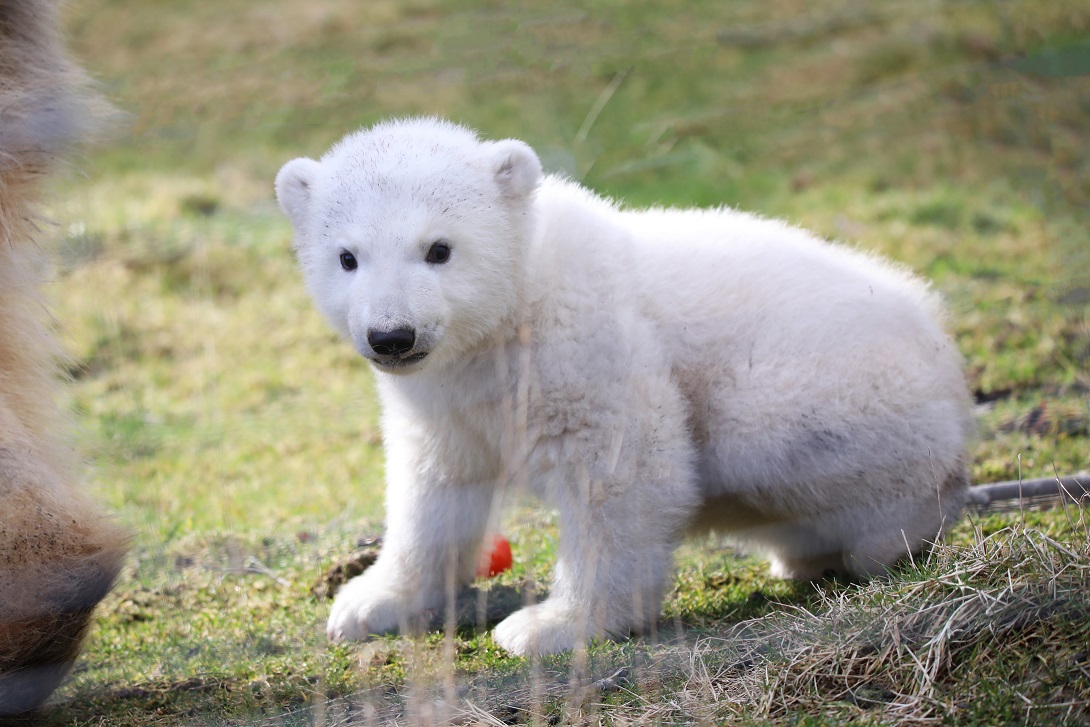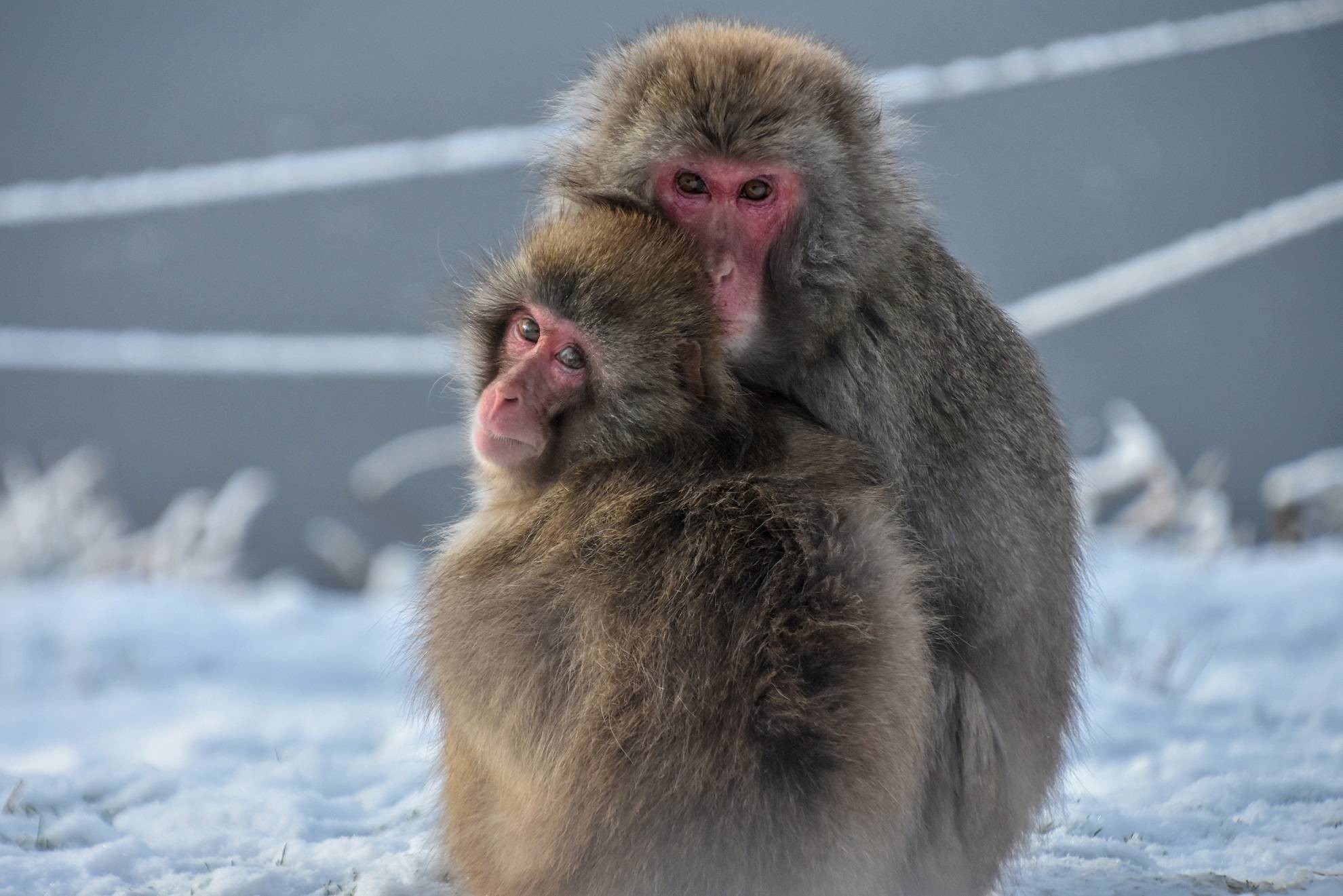Polar bears and Highland Wildlife Park
Posted 27 Feb 2023 in Highland Wildlife Park

Why are there polar bears at Highland Wildlife Park?
Like all the animals in our care, Arktos, Walker, Victoria and Brodie are amazing ambassadors for their relatives in the wild and help hundreds of thousands of people connect with nature every year. They encourage visitors to learn about the threats facing wildlife and the action they can take to help.
Since the species first arrived at the Royal Zoological Society of Scotland’s (RZSS) Highland Wildlife Park in 2009, our polar bears have driven deeper engagement with wildlife for visitors and developed incredible relationships with their keepers, who provide an excellent standard of care.
They have made a tremendous impression on everyone who visits and the billions of people who have seen news about our polar bear cub births around the world.
As well as being loved by people all over Scotland, they are especially important to the local community in Kincraig, who celebrated their polar bear connection with a light trail in December which is hoped will be a new annual tradition for the area.
RZSS has pledged to create deeper connections with nature for more than a million people by 2030 and partnerships like this show just how impactful the amazing animals we care for can be.
With the help of Brodie, Victoria, Arktos and Walker, we are able to reach people beyond our boundaries and inspire them to protect, value and love the wildlife we have on our doorstep here in the Cairngorms and around the world.
What is so important about polar bear breeding?
As well as being essential for the European breeding programme, which ensures a healthy and genetically diverse population of bears living in human care, giving Victoria the chance to be a mother is important for her individual wellbeing.
The opportunity to go through pregnancy and parenthood provides animals with a vital opportunity to express natural behaviours and is fantastic for their overall welfare.
Victoria is an incredible mother to Brodie and did a wonderful job raising Hamish, who now lives at Yorkshire Wildlife Park in a similarly large, natural and varied habitat.
Seeing her bring up two big, healthy boys has been a joy for our charity’s dedicated teams and the hundreds of thousands of visitors who have flocked to see the family in action.
Polar bears are the largest land carnivore and used to sub-zero temperatures – do they have enough space and the right climate in Scotland?
It may come as a surprise to learn the Scottish Highlands lie at the same latitude as parts of Alaska, Canada and Russia! Winter visitors to the park will know we get lots of snowfall each year – sometimes so much we’re not able to open safely for humans – but all our cold-weather adapted animals are in their element here.
Like Yorkshire Wildlife Park’s Polar Project, we have around ten acres of space dedicated to polar bears at Highland Wildlife Park. Evidence from animal care specialists and welfare scientists fed into the design of our charity’s polar bear habitats which feature a range of habitat, including large ponds, natural vegetation and soft areas.
They benefit hugely from the complex and stimulating natural environment of the Cairngorms National Park which, alongside an excellent standard of care from an expert team, provides for the bears’ physical and mental health.
In the wild, polar bears, particularly adult females, are solitary animals that only come together during mating season. We have replicated this by having Victoria’s enclosure on the far side of the park, away from where Arktos and Walker share a custom-built enclosure considered to be one of the world's largest and best at almost six acres in size.
Many people think of polar bears as white animals in a white landscape, but even in their native range the weather varies, with Brodie’s wild relatives getting just as muddy in the summer months.
How long has RZSS worked with polar bears?
Our wildlife conservation charity’s first polar bear was a male called Snowball who arrived at Edinburgh Zoo just before it opened to the public in July 1913. Possibly the most famous and the last of bears at the zoo was Mercedes, who we moved to Highland Wildlife Park in 2009 to a much larger enclosure which was specially designed for her.
Mercedes was born in the wild in the western Hudson Bay region of Manitoba Canada in the early 1980s. She began wandering into the town of Churchill and as a result was going to be shot, but luckily a concerned member of RZSS intervened and managed to save Mercedes from certain death, arranging for her to be brought to Edinburgh Zoo in 1984.
At the zoo she reared two cubs which were sired by her partner Barney (who was born at Whipsnade Zoo and died at Edinburgh Zoo in November 1996), before moving to the park.
The European breeding programme co-ordinator for polar bears soon got in touch after seeing the size and natural complexity of Mercedes’ new home and asked if we could take Walker, then aged two. Walker and Mercedes shared an enclosure for a year before Mercedes sadly had to be put to sleep on the recommendation of our expert vets due to age-related health problems.
Arktos arrived in April 2012, becoming fast friends with Walker who is also very playful. The pair like to spend their time chasing, wrestling, swimming and eating together.
Victoria following in March 2015, travelling from Aalborg Zoo in Denmark where she had reared her first cub, Milak (born in 2008). After mating with Arktos, Victoria gave birth to Hamish, the first polar bear cub to be born in the UK for 25 years.
Hamish moved to Yorkshire Wildlife Park in October 2020 and his little brother Brodie was born in December 2021. Brodie will also stay with mum Victoria until his natural dispersal age at around two to three years old.
Is the Royal Zoological Society of Scotland helping to combat climate change?
As a wildlife conservation charity with such powerful ambassadors for the fight against global warming in our care, we know species protection alone means nothing without protecting their habitats too.
One of the objectives in the RZSS 2030 strategy is to further reduce our carbon footprint by 60% by 2030 and develop a strategy to be net zero by 2040.
Highland Wildlife Park and Edinburgh Zoo have both achieved gold standard accreditation from Green Tourism. The award certification programme recognises tourism businesses that are actively working to become more sustainable, and the awards are acknowledged worldwide as an indicator of good, environmentally-friendly practice.
Both parks also hold ISO14001 certification which is an internationally recognised standard. This requires being able to prove that we are managing the environmental aspects of our park, fulfilling all compliance obligations, and addressing all risks and opportunities. Perhaps most importantly, we also have to prove that we are striving to continually improve sustainability in our operations.
With more than a million species at risk of extinction, we must act now to halt and reverse the loss of biodiversity. We all have a role to play as individuals and in our communities, which is why we are developing Scotland’s Wildlife Discovery Centre at Highland Wildlife Park.
Sustainability and supporting local communities will be at the heart of a new network hubs around the park which will bring to life the challenges facing wildlife in Scotland and around the world. Crucially, we will also focus on the opportunities to protect nature and the actions we can take in our everyday lives.
What happens to the funds raised from donations, ticket sales, adoptions and memberships?
Every visit to Highland Wildlife Park helps to save wildlife and empower people in Scotland and around the world to protect, value and love nature.
As our planet’s rich biodiversity declines at an alarming rate, zoos and wildlife conservation charities like the Royal Zoological Society of Scotland are more relevant than ever before. We are in a unique position to provide a safe haven for threatened species, protect animals in the wild, foster deep and lasting connections with nature and inspire the conservationists of the future.
Now is the time to work more collaboratively than ever before, using the skills and experience of all who hold nature dear.
Now is the time to win hearts and minds, ensuring everyone recognises the true value of nature and its crucial role in our health, wellbeing, prosperity and happiness.
Now is the time to inspire and empower people and communities to love and protect nature for today, tomorrow and generations to come.

